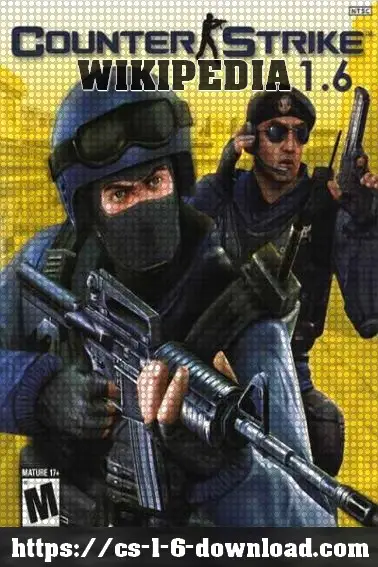Counter-Strike 1.6 – Wikipedia
Counter-Strike 1.6 – Wikipedia
In recent years, Counter-Strike 1.6 download has become one of the most popular games and is another revision of Half-Life. There have been many websites and magazines that have chosen “Half-Life” as their best game of the year. Using the Half-Life game engine, the Half-Life Modification is a new game. Although amateur game creators created different players, maps, themes, and atmospheres, the game was not a commercial product.
A few years after “Half-Life” was released, it was still playable using its old game engine, which could be attributed to its modification. There are several differences between “Counter-Strike download 1.6” and its predecessors, including realistic weapons, dynamic atmosphere, high-quality player models, exquisite maps, and frequent updates.
Maps
A wide variety of environments can be found in Counter-Strike 1.6, including urban, arctic, jungle, and desert settings. The official distribution of maps featured a slightly smaller rotation during the post-beta stages. There have not been many updates to the game since Counter-Strike 1.6 download was released.
Maps for the game were primarily created by hobbyist mappers who were originally just enthusiasts. Many of the level designers were able to publish their first works at retail after Valve Software bought Counter-Strike’s rights.
Scenarios
In CS 1.6 download, three official scenarios are available: Assassination, hostage rescue, and bomb defusal. The beta version of Counter-Strike included the fourth scenario, escape. However, all official maps have been removed from the game before its release, so the scenario can still be played.
- Hostage rescue
In this scenario of counter-strike 1.6, the terrorists are holding hostages. In official maps, between three and five hostages are depicted, but most maps show four hostages. To rescue these hostages, the Counter-Terrorist team must escort them to a hostage rescue zone. In order to prevent the rescue of the hostages, the terrorists must prevent them from leaving. It is also possible to win by eliminating the opponent’s team.
- Bomb defusal
Two bombsites are featured in this scenario, and one terrorist starts with a C4. A bomb must be planted at one of the bomb sites. Upon being planted, the bomb explodes after a period of time. Defusing the bomb during this time will make the Counter-Terrorists victorious, as successful defusing will make them the winners. An explosion of the bomb will result in the victory of the Terrorists. Alternatively, eliminating the opposing team can win a round.
- Assassination
Oilrig is the only map featured in the latest release of this scenario, which is the least popular of the three. Throughout this scenario, one member of the Counter-Terrorist team assumes the role of a VIP who must escape the VIP escape zone. Depending on the map, there might only be one escape zone, or there might be more than one. It is the Terrorists’ responsibility to eliminate the VIP, and destroying the VIP will earn them victory. A limited number of weapons are available for purchase by both teams. It is also possible to win by eliminating the opponent, just as in other scenarios.
Game modes
A highly competitive multiplayer mode has made Counter-Strike download 1.6 a worldwide success. A multiplayer mode was only a logical decision based on its mod origins. As new models would have been required for a single-player game, it would have taken more time and effort considerably. Multiplayer games require less work as compared to single-player games, which require AI code.
Teams, objectives, and maps are all different in each of the three official scenarios. Every time, two teams face off against each other, the Counter-Terrorists and Terrorists.
CS 1.6 download is available for interested players via direct links and torrent files which are the safest and fastest methods to download counter-strike 1.6.

